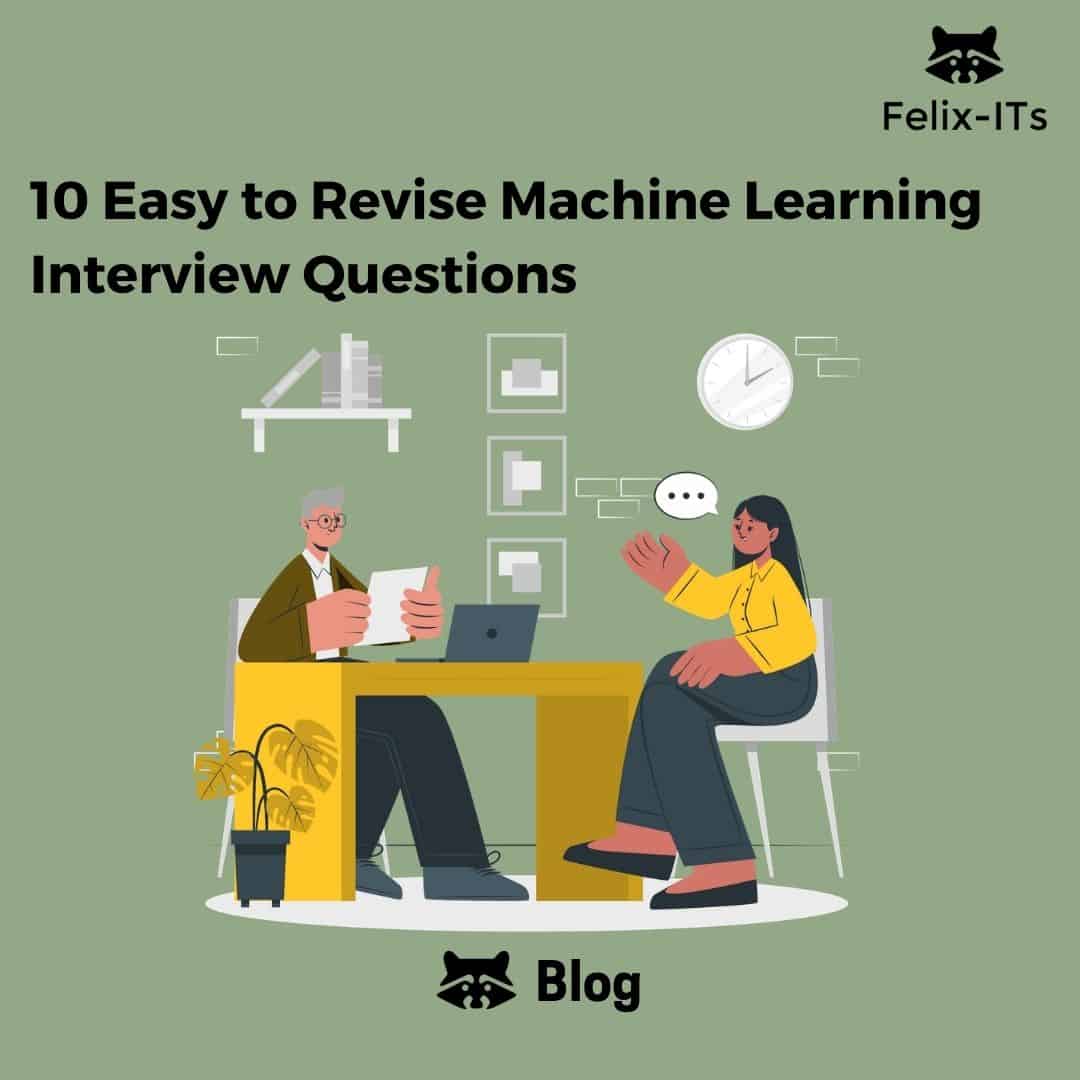Machine learning interview questions will allow you to be an effective influencer in the data science interview process and clear your way to become a data scientist. Are you pursuing data science or machine learning courses right now?
Felix-ITs is bringing a brief guide of 10 interesting machine learning interview questions for you.
These 10 machine learning interview questions will be handy ones to go along with as you are going to ace the machine learning job interview or say internship.
Most tech companies have 3 rounds of machine learning interview and these 10 questions will help you go through the first two rounds where you will be asked these questions at random:
-
What is the difference between supervised and unsupervised machine learning?
Supervised machine learning algorithms make us provide labeled data. For instance, the prediction of stocks in the market, but on the other hand, unsupervised algorithms don’t need labeled data, an example of emails would be nice here. In emails, we don’t need labeled data for dividing spam and non-spam emails.
-
What is the difference between KNN and k.means clustering?
KNN or K-Nearest Neighbours is a supervised machine learning algorithm in which, we need to offer the labeled data to the model which further classifies the points based on the distance of the referred point from the nearest points. But, with K-Means clustering is a part of an unsupervised machine learning algorithm where we need to provide unlabeled data and it classifies points into clusters based on the average of the distances between various points.
-
Tell me the difference between classification and regression.
With classification, we can produce discrete results, it is used to classify data in some particular categories. An example would be of emails where we classify them into spam and non-spam categories. Regression analysis is used to deal with continuous data, for example, the prediction of stock market numbers at a particular point in time.
-
How would you ensure that your model is not overfitting?
It would be nice if we keep the model simple. Reducing the noise in the model by taking fewer variables and parameters into consideration would work here. Cross-validation methods such as K-folds cross-validation would help keep overfitting in control. Regularization methods such as LASSo will help in avoiding overfitting by penalizing a few parameters if they are causing overfitting.
-
What is Test Set or Training Set?
We divide the given data set into two different categories such as ‘Test Set’ or ‘Training Set’.
‘Testing set’ is a part of the dataset used to test the trained model.
‘Training set’ is a part of the dataset which is to train the model.
-
What are the advantages of Navie Bayes?
A Navie Bayes classifier can gather very quickly. Due to this, we need less training data where naive Bayes classifiers are used.
-
What is Ensemble learning?
With ensemble learning, many base models like regressors and classifiers are created and mixed to get better results. It is used when we create component classifiers to be accurate and independent. We can discuss sequential and parallel ensemble methods.
-
Tell me something about dimension reduction in machine learning.
Dimension reduction is a process where we reduce the size of the feature matrix. We try to decrease the number of columns to achieve a better feature set either by combining columns or cutting extra variables.
-
What would you do if you see your model suffering from low bias and high variance?
Low bias is when the model’s predicted value gets close to the actual value. Here, I can use bagging algorithms like random forest regressor.
-
Can you tell me the differences between random forest and gradient boosting algorithm?
Bagging techniques are used in the random forest whereas, GBM uses boosting techniques. Random forests particular try to reduce variance and GBM decreases both bias and variance of a model.
Please take 2 important notes into consideration with these machine learning interview questions:
- These are not exhaustive questions but just a preview of what you might expect with the machine learning interview.
- The answers are just the technological concepts where you need to learn the concepts in deep and try to frame the answers on your own.
We will be adding more questions in our upcoming blogs, so keep reading our pool of resources at Felix-ITs.
